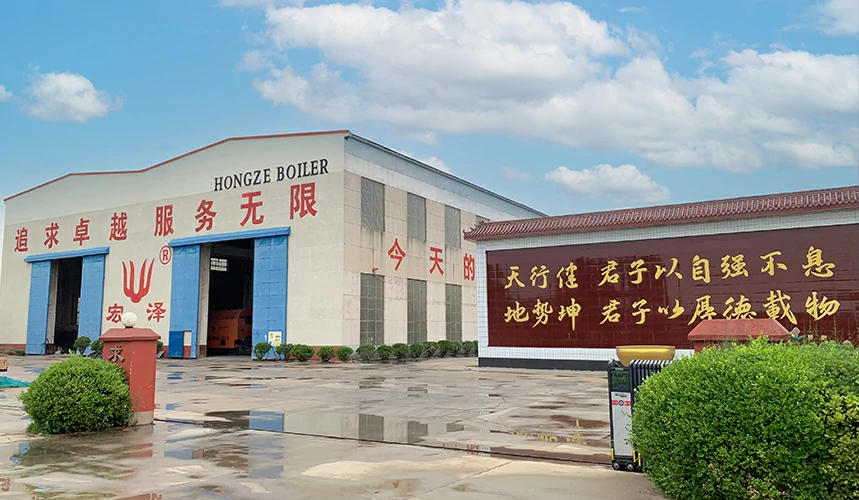
नोभ . 12, 2024 07:13 Back to list
steam engine boiler design
Steam Engine Boiler Design An Essential Component of Industrial Revolution
The steam engine, a pivotal invention of the Industrial Revolution, transformed industries by enabling greater efficiency in power generation and manufacturing. At the heart of every steam engine lies the boiler, a crucial component that produces steam by heating water. Understanding the design of steam engine boilers not only reveals their functionality but also highlights the engineering advancements of the 18th and 19th centuries.
Basics of Boiler Functionality
Boilers operate on the principle of converting water into steam through the application of heat. The primary objective is to generate a sufficient quantity of steam at the right pressure and temperature for various applications. Inside a boiler, fuel—be it coal, oil, or gas—is burned to produce heat, which then raises the temperature of water within a pressure vessel. As water reaches its boiling point, steam accumulates, which can subsequently be harnessed to drive pistons or turbines.
Types of Steam Boilers
In the realm of steam engine boiler design, several types are commonly utilized, each with unique characteristics tailored to specific needs
1. Fire-Tube Boilers These boilers consist of a series of tubes that carry hot gases produced by burning fuel. The heat from these gases is transferred to the water surrounding the tubes, generating steam. Fire-tube boilers are known for their simplicity and ease of operation, making them suitable for small to moderate steam requirements.
2. Water-Tube Boilers Contrary to fire-tube designs, water-tube boilers contain water-filled tubes through which hot gases pass. This design allows for higher pressures and is typically used in large industrial applications. Water-tube boilers are more efficient and can respond quickly to fluctuating steam demands.
3. Electric Boilers Utilizing electric resistance to heat water, electric boilers offer a clean and quiet alternative to traditional combustion methods. They are advantageous in situations where fuel availability is limited or environmental regulations are stringent.
Key Design Considerations
steam engine boiler design

The design of a steam boiler involves numerous engineering considerations to ensure safety, efficiency, and reliability
- Pressure and Temperature Ratings Boilers must be designed to withstand the pressure and temperature of the steam produced. This involves selecting appropriate materials, such as steel or alloy, that can endure thermal stress.
- Safety Features Given the potential hazards associated with high-pressure steam, safety mechanisms—such as pressure relief valves, water-level indicators, and blow-off valves—are critical. These features prevent over-pressurization and ensure safe operation.
- Efficiency Optimization Enhancing efficiency is a primary goal of boiler design. This involves minimizing heat loss through insulation, utilizing economizers to recover waste heat, and incorporating advanced controls for optimal fuel usage.
- Maintenance Accessibility A well-designed boiler facilitates straightforward maintenance and inspection. Regular maintenance is essential for prolonged operational life and safety compliance.
Historical Context and Innovations
During the Industrial Revolution, advancements in boiler design were crucial to meeting the demands of burgeoning industries. Early boilers were often made from wrought iron, but as knowledge of materials and pressure dynamics grew, cast iron and later steel became the standards. Innovations such as the introduction of flue gas condensers and improved combustion systems have further enhanced boiler efficiency and reduced environmental impact.
Moreover, the rise of regulatory standards and safety codes in the late 19th century spurred the development of more robust designs and safety protocols. This led to a significant decrease in boiler-related accidents.
Conclusion
The design of steam engine boilers remains a vital aspect of both historical and modern engineering. While the steam engine may no longer be the primary power source in most applications, the principles of boiler design continue to influence contemporary power generation, heating systems, and industrial processes. Understanding these designs not only provides insight into the technological advancements of the past but also inspires future innovations in energy efficiency and safety. As we move towards a more sustainable future, the lessons learned from steam engine boiler design may inform the engineering solutions of tomorrow.
-
Best Steam Boiler Design PDF Free Design Calculation & Diagram Downloads
NewsJun.10,2025
-
Hot Boiler Water Heater Efficient Heating Solutions for Home & Commercial Use
NewsJun.10,2025
-
Steam Boiler Safety Devices High-Quality Protection Valves
NewsJun.10,2025
-
Ultimate Steam Boiler Checklist for Safety & Efficiency
NewsJun.10,2025
-
Optimal Hot Water Boiler Temperature Setting Guide
NewsJun.10,2025
-
Effective Hot Water Boiler Chemical Treatment Protect & Maintain
NewsJun.09,2025
Related PRODUCTS






















